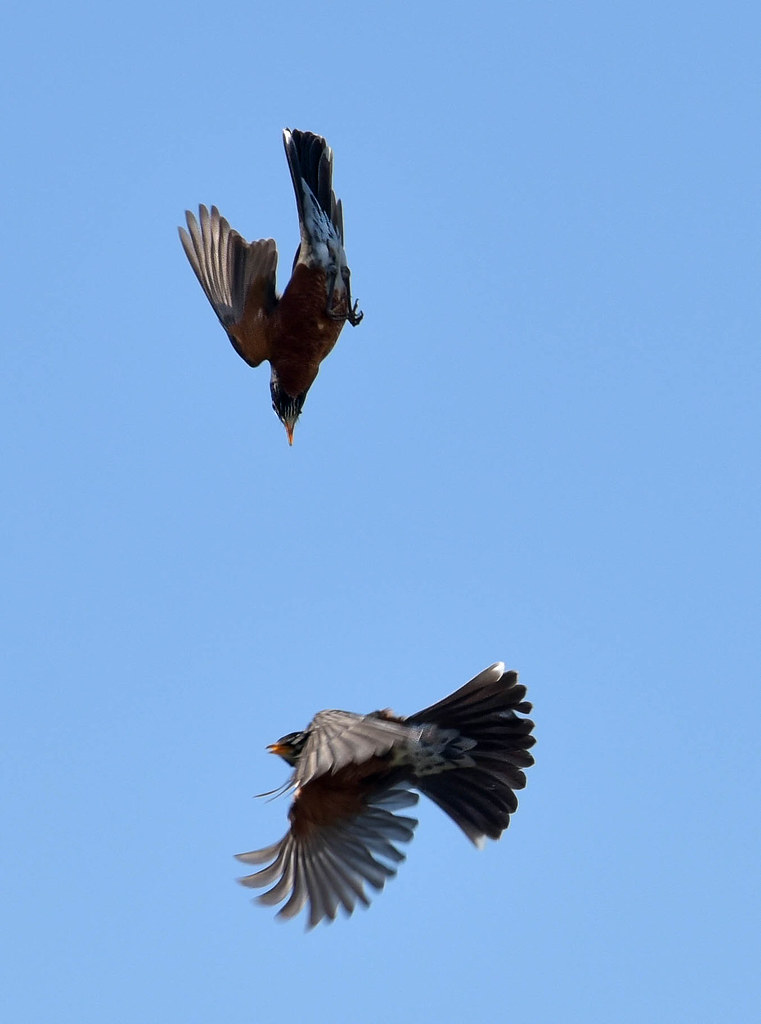First frame of the guy in camo with the Remington autoloading shotgun: DOF is shallow...focus is on the gun, but the arm and shoulder are closer than the focus zone...the focus is good on the gun, but the depth of field is insufficient to capture the shooter sharply. This is your fault, not the focus system's fault. If you want everything in-focus, you need the right f/stop to do that, and your f/stop is not sufficiently small to pull adequate DOF with such a long focal length, from that camera to subject distance, at that angle.
Second frame of the man in blue shooting the Winchester Model 12 (? I think it's a Model 12, but perhaps an older Model 1912) pump-action: the angle of the camera in relation to the shooter and the shotgun is such that you have more of him in-focus than in frame one, but yet he is just a little bit OOF...not bad, but just slightly...again pretty typical with such a long focal length from such a close camera to subject distance. Again, if you want it ALL in-focus, you need to stop down the lens diaphragm more, to a smaller aperture...
Third frame, of the guy shooting the Beretta autoloader...I can see the high ISO softening of the image, yet still, it's "okay"...DOF is a bit shallow, but the gun's good and sharp and so is his forestock hand. As-expected with such a long lens at such an f/stop.
The last frame, of the shooter with the green earplugs: the DOF is such that only his body and head are in the sharply-focused zone,. and the depth of field slides out to the de-focused zone by the time we get to the shotgun's forestock. Again--utterly As-Expected with such a long lens, at that camera angle, from such a close distance, at such an f/stop.
I do not even need to pull EXIF data to see that these are pretty much as-expected shots. Your camera is focusing pretty well, but the depth of field is not deep enough to render these subjects 100% all within the focused zone.
Based on what I see here, and the earlier rodeo example, I think you're confusing focusing problems with inadequate depth of field from long telephoto lenses. As overread mentioned, a horse and rider is a "long" subject, and with a 600mm lens, the DOF is _shallow_. A 420mm lens is also a long lens, and DOF is critically shallow.
A 300mm + 1.4x TC is a 420mm focal length. That's a long focal length, and these are fairly tightly-framed shots, so the camera-to-subject angle will be critical. These pictures look as expected to me. Shutter speed is actually "too fast"...if you want more In-Focus, you need to slow the shutter down, and stop the lens down to get something more like f/8, if you want to always have the entire shooter and the gun in-focus, from such a close camera position, with such a long lens length. 1/2500 to 1/4000 shutter speeds on this type of mostly-static shooting is driving the ISO levels high.

 birds fighting
birds fighting Robins fighting-4
Robins fighting-4 Robins fighting
Robins fighting






![[No title]](/data/xfmg/thumbnail/33/33361-f56184027ce743b2b7ba9d378a8bb426.jpg?1734163298)




